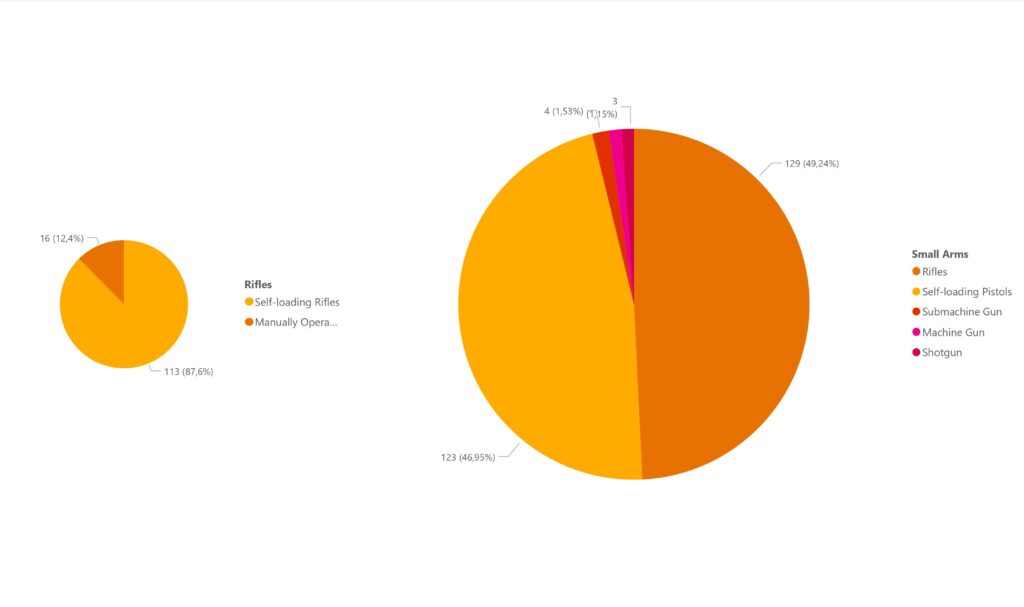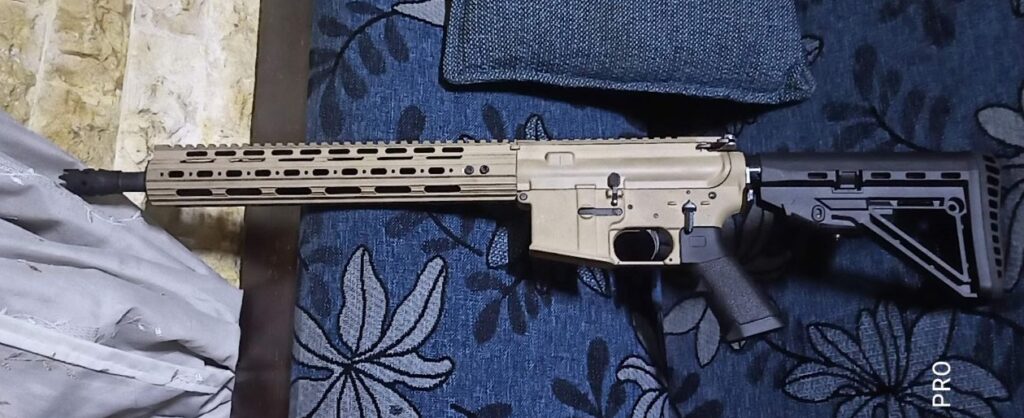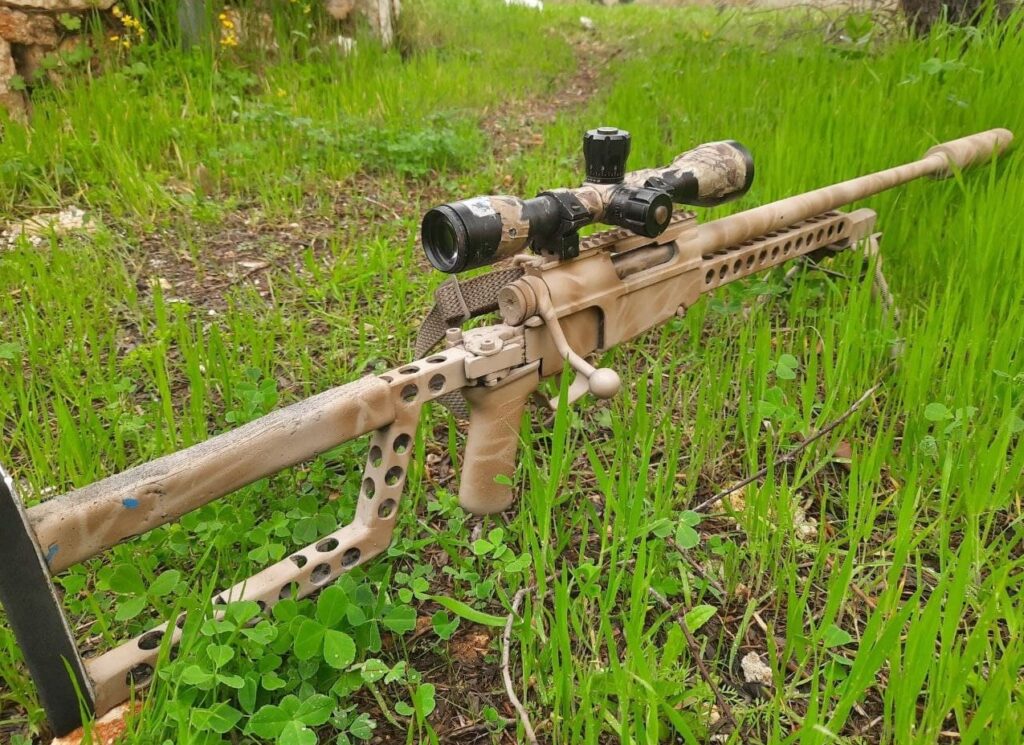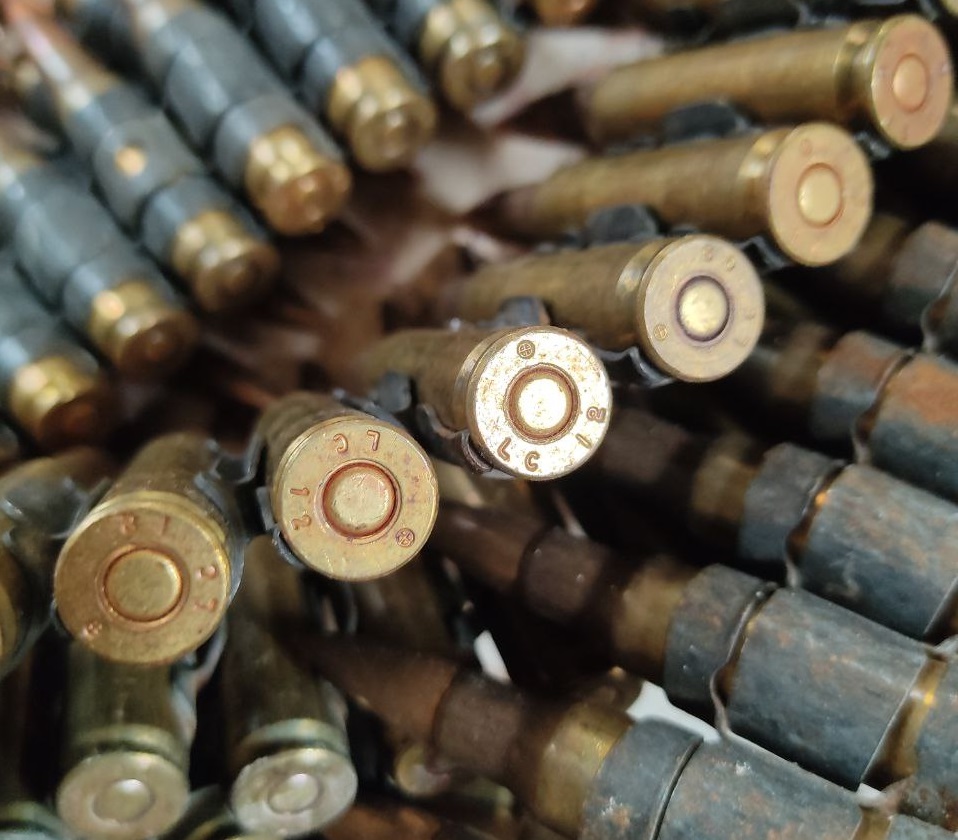Jack Shanley & Mick F.
Introduction
The conflict in Syria fuels a diverse trade in arms and munitions. Many transactions are performed online, providing an opportunity for remote analysis. This article is the second in a series of monthly updates to ARES Research Note 11: Analysing the Online Arms Trade in Opposition-controlled Syria. Readers should refer to that report for further information on methodology and context. These short updates will present ongoing analysis of the online arms market in opposition-controlled North and North-western Syria, focusing on the previous month (in this case, March 2021). After data has been collected for the whole of 2021, a full report will be released.
Key Findings
- There was a modest increase in the total number of trades recorded as compared to February, but still fewer than in December or January;
- March saw a significant increase in trades of self-loading pistols compared with the previous month, although numbers still did not reach those recorded in December or January;
- After a spike in trades of blank-firing pistols in February (largely attributable to a single sale), the numbers returned to sit in-line with previous trends;
- Light weapons remain scarce, with no examples recorded this month.
Describing the Dataset
Items by Class
In March 2021, 289 sales of small arms, munitions, and blank-firing pistols were recorded by ARES. The total number of documented trades in March (289) was higher than the 235 documented in February, but was still fewer than the numbers recorded in January 2021 (326) and December 2020 (387). Blank-firing pistols accounted for slightly less than 20% of all documented trades in March (57 examples). The total number of blank-firing pistols offered for sale decreased by nearly half compared to February. The February numbers were inflated due to a single large sale, however, and so the march numbers represent a return to trades in line with previous months. Interestingly, no offers for light weapons were documented in March 2021. This is consistent with a documented scarcity of light weapons in ARES Research Note 11 and the February 2021 Update.

Small Arms by Type and Sub-type
The majority of documented small arms trades involved rifles. Rifles represented almost 50% of small arms offers in March, a smaller proportion than was documented in either Research Note 11 (55%) or the February update (68%). The prevalence of manually operated (in this case, all bolt-action) rifles remains relatively unchanged, with these weapons accounting for 12% of documented rifle sales (16 examples). Closely following the broader category of rifles were self-loading pistols, which constituted 46% of the documented sales this month. This is the highest proportion of self-loading pistol offers yet documented, and is significantly higher than the proportion documented in the February update (26%) or in Research Note 11 (34%). Additionally, four sub-machine guns, three manually operated (break-open; single- and double-barrel) shotguns, and three machine guns were documented in the dataset.

Small Arms by Country of Origin
It was possible to identify the national origin of 216 of the 262 documented small arms sales. When blank-firing pistols are included in the analysis, Turkish weapons are once again the most common, representing 22% of total documented sales. Russian (including Soviet) weapons were the second-most common, constituting 16%—this number increases to 20% when only lethal-purpose small arms are considered. Czech and Chinese weapons were the next most common, representing 13% and 6% of trades involving lethal-purpose weapons, respectively. Weapons could be identified from 17 different countries.
Self-loading Rifles by Family
All of the 113 self-loading rifles offered for sale in March could be identified by family or model. AK-family weapons were the most common, representing 78 of the 113 documented self-loading rifles (69%). Of these, AKM-pattern rifles were the most prevalent (48 examples). While relatively common in ARES Research Note 11 and the February 2021 update, there were only four AK-103 series rifles offered for sale in March 2021. Six AK-family weapons chambered for the 5.45 × 39 mm cartridge were documented—twice as many as were documented in February 2021. Additionally, 25 Sa vz. 58 series rifles, five precision self-loading rifles (SVD and PSL models), an M16A1, and a SKS were recorded. Compared with AK-family weapons, Sa vz. 58 rifles commanded low prices.
Self-loading Pistols by Model
There were 67 documented sales of lethal-purpose self-loading pistols in March 2021, more than three times as many as were documented in February 2021. No individual model comprised a large majority of the dataset. PM-pattern (‘Makarov’) pistols and TT-series (‘Tokarev’) pistols were the most common, each accounting for some 10% of the dataset (7 examples each). Hi-Power-pattern pistols and Star Model B series pistols were the next most popular, each with 6 documented examples.
Of the 56 blank-firing pistols which were documented in March, 53 were identifiable by model. The Turkish Lord T822 model made up 41% (22 examples) of the recorded sales of blank-firing pistols.
Individual Sales of Interest
Glock 19 Gen3 converted to automatic operation

Unlike the Glock 19 Gen 3 self-loading pistol documented in the February 2021 Update, this example was likely supplied to Iraqi Security forces by the United States, sometime in the mid-2000s. While many of these pistols have since been diverted into Syria, this example is notable for the small attachment visible at the back of the weapon’s slide (see Figure 2.1, right). This common aftermarket component renders the weapon capable of automatic fire (in a configuration sometimes referred to as a ‘machine pistol’). These adaptations are commonplace on black markets around the world (see, for example, previous ARES reporting on online sales in Venezuela), and are increasingly observed in Iraq and Syria.
Second World War-era PPSh-41 sub-machine gun

This Second World War-era PPSh-41 sub-machine gun is marked to indicate it was produced in 1944. These weapons are rare in Syria, do not appear to have been used extensively during the Syrian Civil War, and have only appeared in social media posts shared by pro-Syrian Government fighters. It is likely that this weapon was originally supplied to Syria by several Eastern European countries in the 1950s and 1960s.
Heavily modified M16A1

Whilst it appears to be a fairly typical, modern commercial AR-family weapon, this rifle is actually a heavily modified M16A1. The barrel has been shortened from 20 inches (508 mm) to roughly 14 inches (355 mm), and the gas block has been either replaced or cut down to fit under the modern, accessory railed handguard. Interestingly, the rifle’s carrying handle has been removed and a Picatinny-style rail has been affixed to the upper receiver. The weapon also features several aftermarket parts, including the compensator, handguard, pistol grip, buffer tube, and stock. Some M16A1 rifles documented in Syria have been determined to have entered the country via Lebanon, which acquired them from the United States from the 1970s.
Heavily modified MAS 36

This French MAS 36 has been heavily modified. In fact, it appears that the only original components are the receiver, trigger, and bolt. The stock has been replaced with a locally made example—most likely produced from aluminium—with an unusual side-folding buttstock configuration. The barrel has likely been replaced, as the seller notes that it uses “Nato bullets”, indicating that it is chambered for a NATO calibre—probably 7.62 × 51 mm. The weapon features several additional accessories including a sling, a Bushnell-made scope, and a suppressor which appears to be locally made. A sizeable quantity of MAS 36 rifles were given to the Syrian Army following the Second World War, and these weapons have been seen during the Syrian Civil War and in ARES monitoring of online arms trade in Syria over previous years.
American-made 7.62 × 51 mm cartridges (belted)

The headstamps on this belted 7.62 × 51 mm ammunition offered for sale in North-western Syria indicate the cartridges were manufactured by the Lake City Ammunition Plant, in Independence, Missouri. Visible headstamps on the different cartridges range between 2008 and 2012. The ammunition includes both full metal jacket (FMJ; ball) and tracer rounds. Significant quantities of U.S. made 7.62 × 51 mm ammunition—most commonly belted in ball-and-tracer combinations for use with general-purpose machine guns, such as the M240—was supplied by the United States to Free Syria Army groups such as Division 30.
Sources
Adamec, Jan. 2013. ‘Czechoslovakia and Arms Deliveries to Syria, 1955–1989’. Les Cahiers Sirice, Vol. 10 No. 1, pp. 69–81.
ARES. n.d. Conflict Materiel (CONMAT) Database. Confidential. Perth: Armament Research Services (ARES).
Ferguson, Jonathan. 2014. ‘Syrian Rebels Produce Homemade Anti-Materiel Rifles’. The Hoplite (ARES company blog). 30 April. <https://armamentresearch.com/syrian-rebels-produce-homemade-anti-materiel-rifles/>.
Hays, G. & N.R. Jenzen-Jones. 2018. Beyond State Control: Improvised and Craft-produced Small Arms and Light Weapons. Geneva: Small Arms Survey. <http://www.smallarmssurvey.org/fileadmin/docs/U-Reports/SAS-improvised-craft-weapons-report.pdf>.
Jenzen-Jones, N.R. (ed.). 2020. The ARES Arms & Munitions Classification System (ARCS). Perth: Armament Research Services (ARES).
Jenzen-Jones, N.R. 2018. ‘Weapons Identification: Small-calibre Ammunition’ in An Introductory Guide to the Identification of Small Arms, Light Weapons, and Associated Ammunition (Jenzen-Jones & Schroeder, eds.). Geneva: Small Arms Survey. <http://www.smallarmssurvey.org/resources/publications/by-type/handbooks/weapons-id-handbook.html>.
Jenzen-Jones, N.R. 2014. Following the Headstamp Trail: An Assessment of Small-calibre Ammunition Documented in Syria. Working Paper 18. Geneva: Small Arms Survey. <http://www.smallarmssurvey.org/fileadmin/docs/F-Working-papers/SAS-WP18-Syria-Headstamp-Trail.pdf>.
Marduel, Bruce. 2018. ‘French MAS Rifles in Syria, The Syrian Civil War’. Silah Report. 29 October. <https://silahreport.com/2018/10/29/french-mas-rifles-in-syria-the-syrian-civil-war/>.
McCollum, Ian. 2019. Chassepot to FAMAS: French Military Rifles, 1866–2016. Nashville: Headstamp Publishing. <https://www.headstamppublishing.com/french-rifle-book>.
Pérez, Pedro, Jonathan Ferguson & N.R. Jenzen-Jones. 2020. Black & Grey: The illicit online trade of small arms in Venezuela. Research Report 10. Perth: Armament Research Services (ARES). <https://armamentresearch.com/wp-content/uploads/2020/07/ARES-Research-Report-10-Black-Grey.pdf>.
Schmitt, Eric & Ginger Thompson. 2007. ‘A broken supply chain leaked arms in Iraq’. New York Times. Digital edition: 11 November. <https://www.nytimes.com/2007/11/11/world/africa/11iht-weapons.1.8278767.html>.
Shanley, Jack & Mick F. 2021. Analysing the Online Arms Trade in Opposition-controlled Syria. Research Note 11. Perth: Armament Research Services (ARES). <https://armamentresearch.com/wp-content/uploads/2021/03/ARES-Research-Note-11-Analysing-the-Arms-Trade-in-Opposition-controlled-Syria-1.pdf>.
Shanley, Jack & Mick F. ‘Analysing the Online Arms Trade in Opposition-controlled Syria: February 2021 update’. The Hoplite (ARES company blog). 24 March. <https://armamentresearch.com/analysing-the-online-arms-trade-in-opposition-controlled-syria-february-2021-update/>.
SIPRI (Stockholm International Peace Research Institute). 2021. Anti-personnel Weapons. London: Routledge.
Smallwood, Michael. 2015. ‘US M240 GPMG seen with Jabhat al-Nusra fighter in Syria’. The Hoplite (ARES company blog). 20 October. <https://armamentresearch.com/us-m240l-gpmg-seen-with-jabhat-al-nusra-fighter-in-syria/>.
Remember, all arms and munitions are dangerous. Treat all firearms as if they are loaded, and all munitions as if they are live, until you have personally confirmed otherwise. If you do not have specialist knowledge, never assume that arms or munitions are safe to handle until they have been inspected by a subject matter specialist. You should not approach, handle, move, operate, or modify arms and munitions unless explicitly trained to do so. If you encounter any unexploded ordnance (UXO) or explosive remnants of war (ERW), always remember the ‘ARMS’ acronym:
AVOID the area
RECORD all relevant information
MARK the area from a safe distance to warn others
SEEK assistance from the relevant authorities

